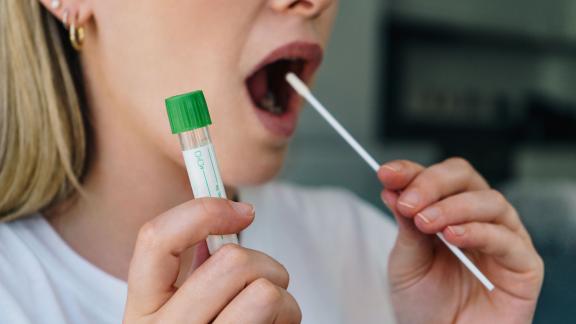Analysis: February release of NHS performance statistics

At a glance
- Following the publication of Tuesday’s elective recovery plan, the latest data shows the waiting list rising to 6.07 million as of the end of December, with increases in the number of 52-week and 104-week waiters.
- For a deeper dive into the figures, we have also published an analysis of the discharge data in the weekly sitrep, which highlights an average of over 12,000 medically fit patients once again unable to be discharged on an average day.
- Key cancer metrics such as performance against the 62-day target from urgent referral to start of treatment continue to present concern, with that target slipping to a record low. This is despite high levels of cancer activity across 2021.
- A&E measures continue to deteriorate, including a record 16,558 12-hour waits from decision to admit, through to admission and that long wait position potentially worse than the headline statistics suggest.
Waiting list
As expected, the elective waiting list rose over 6 million for the first time, rising from 5,995,156 at the end of November to 6,067,326 by the end of December.
The number of 52-week waiters rose from 307,000 to nearly 311,000, while 104-week waiters rose to 18,585. The below chart shows the pressure on 104-week waiters to come, with large numbers of patients who started care two years ago due to tip over the threshold in February and March, before falling in April and May due to the large drop in referrals during that period. By these calculations, over 96,000 patients will need to be treated to meet the target of eradicating two-year waits in the delivery plan for tackling the backlog of elective care, launched on Tuesday.
The cancelled elective operations dataset was also published for the first time this week since quarter 3 (Q3) of 2019/20. The data showed 19,338 cancelled electives in Q3 of 2021/22, a period of high staff absence and omicron infections. However, this is broadly consistent percentage-wise with the equivalent period pre-pandemic in 2019/20 (this was 23,503, but also 1.1 per cent of all elective activity). However, 23.8 per cent of those patients were not treated within 28 days of the cancellation; this is the highest percentage recorded since Q3 of 2001/02 and significantly higher than the 9.1 per cent recorded in Q3 of 2019/20.
Cancer
2021 has seen record levels of cancer referrals, with just over 2 million first consultant appointments from GP urgent referrals from Q1-Q3 of 2021/22, compared to 1.5 million over the same period in 2020/21. The below chart shows the volume of activity in that regard, with 215,393 first consultant appointments in December following a record November (246,316).
Performance did improve slightly in terms of the volume of those patients first seeing a consultant within two weeks for diagnosis (78.6 per cent, up from 77.4 per cent in November) potentially due in part to the lower volume. That percentage is historically low though. For context, the average month in 2019/20 pre-pandemic saw performance of 90.8 per cent against the 93 per cent standard.
Performance against other standards is also concerning, in a month where the service struggled with Omicron and record absence levels. The percentage of people seen within two weeks for breast symptoms (where cancer is not initially suspected) following an urgent GP referral fell to 50.9 per cent, the lowest ever. It was 52.2 per cent in November but, for comparison, 83.9 per cent was the average across 2019/20 and the operational standard is 93 per cent. In practice, this means that there were 12,743 first appointments and over 6,200 were after more than two weeks, and there may be more patients already over the two-week threshold not covered by the data.
Similarly, performance against the two-month standard from GP urgent referral to first treatment for cancer fell to 67 per cent, the lowest ever, and performance against the new four-week wait faster diagnosis standard dropped to 70.5 per cent. More analysis of the current situation for cancer, including insight from members, is available in our new briefing, The War on Cancer: What You Need to Know.
Ambulance
The trend of record category one 1 callouts continues with 72,311 incidents, which is the highest for the month of January on record. Members are telling us of increased acuity in the community, which could be one of the factors causing this.
The weekly sitrep does show the pressure continuing into February, with ambulance handover delays over 60 minutes rising for the third consecutive week. 21.4 per cent of handovers were delayed by 30 minutes or more (18,193 of 85,042 arrivals), and 9 per cent (7,725) by over 60 minutes. The below chart plots this in raw numbers compared to previous years:
The Association of Ambulance Chief Executives’ (AACE) recently published annual review considers some of the challenges with ambulance handovers experienced through 2020 and 2021.
A&E
62.3 per cent of type 1 A&E attendances were within four hours in January, a slight improvement from 61.2 per cent the previous month, meaning 427,619 patients in total had attendances of over four hours. This is still far below typical winter performance. In January 2020, 81.7 per cent of attendances were in four hours or less and 84.4 per cent the previous winter.
‘Trolley waits’ meanwhile, rose once again. There were 16,558 waits of over 12 hours from decision-to-admit, through to admission, higher than December’s record of 12,986, while four-hour trolley waits increased from 120,218 to 122,427.
Trolley waits are not an accurate representation of the number of patients waiting in A&E for that length of time, just those who were waiting to be admitted. This is evidenced by the difference between the four-hour waits above and four-hour waits from decision-to-admit to admission.
The Royal College of Emergency Medicine’s report Crowding and its Consequences goes into some of the effects caused by these long waits.
Mental health
The number of people in contact with mental health services increased from 1.50 million in October 2021 to 1.52 million in November 2021. Most people in contact with mental health services are adults, but the increase in demand is largely driven by children and young people (CYP) needing mental health support. In January 2020, 236,396 CYP were accessing mental health services, and this has increased during the pandemic. In November 2021, this number stands at 357,802, a 51 per cent increase.
We are also seeing an increase in the number of people waiting for mental health support, with approximately 1.6 million people, or one person in 35, currently on the NHS waiting list for specialised treatment.
The number of CYP who have accessed eating disorder services for urgent care has increased considerably during the pandemic and while the numbers have dropped back to some extent, they are still considerably higher than pre-pandemic numbers. This was 649 in autumn 2021/22, compared to 377 in autumn 2019/20, which is a 72 per cent increase.
Whilst 59 per cent of CYP who urgently need help for an eating disorder are being seen within one week, and 66 per cent of those who need routine care are being seen within four weeks, the increase in demand has meant that waiting times have increased, with some young people waiting in excess of 12 weeks for urgent care. This is particularly the case for those needing routine care, with the number waiting four weeks and over to start treatment standing at 1,261 in autumn 2021 compared to 140 in spring 2019.
How is the NHS performing?
View our analysis of the latest NHS performance figures for a rounded view of how healthcare services are coping under immense pressure.
Footnotes
- 1. Category 1 - An immediate response to a life threatening condition, such as cardiac or respiratory arrest. ↑



